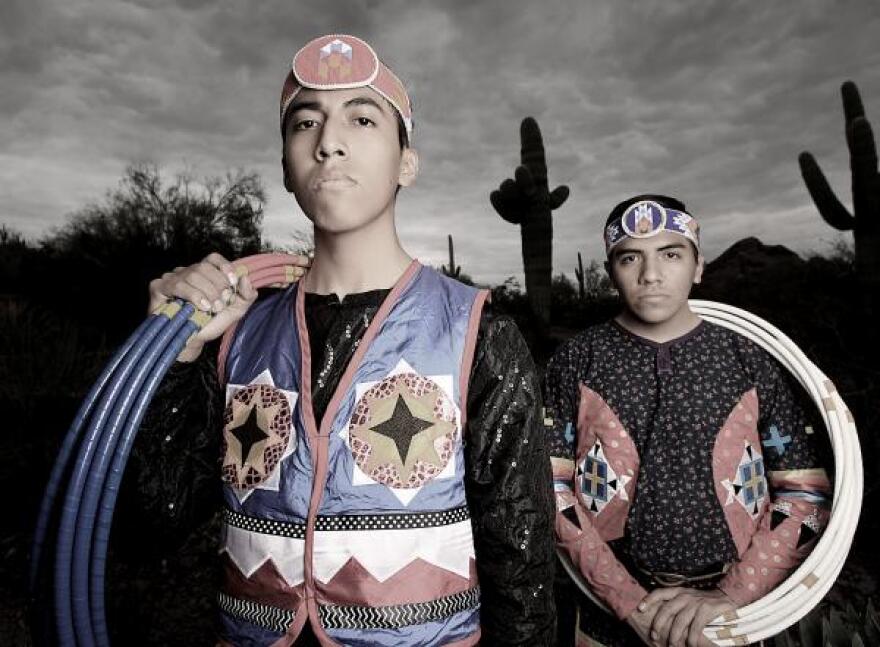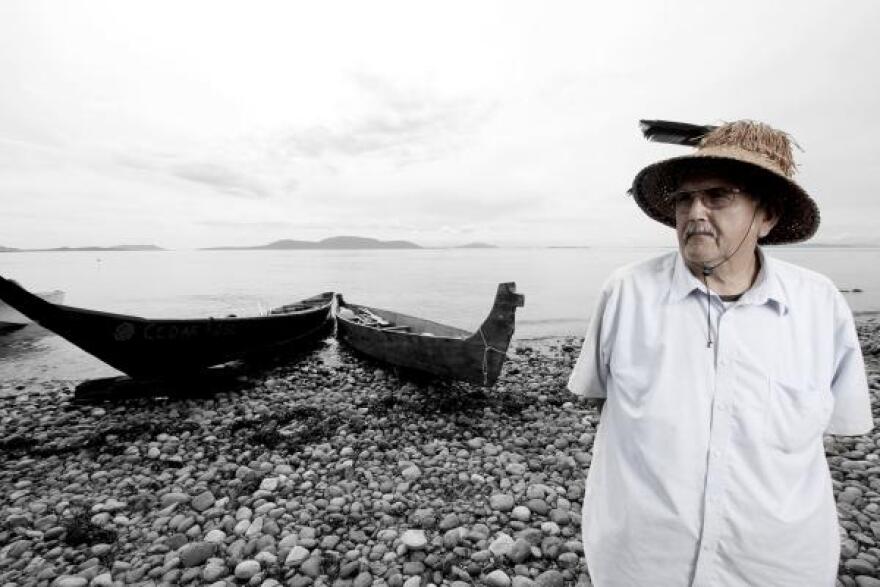Can you name and count the Native American tribes in our state? Photographer Matika Wilbur thinks everyone should be able to. She has set out to visit and photograph each of the 566 federally-recognized tribes in the U.S.
Wilbur is on a mission: "Changing the way we see Native America. That is the goal."
Wilbur is a member of the Swinomish and Tulalip tribes and grew up in La Conner, Washington. She got her start as a fashion photographer in Los Angeles before she decided to focus her work on what it means to be an American-Indian. Project 562, her latest and largest project in this endeavor, will be on display at the Tacoma Art Museum from May 17 to Oct. 5.
Wilbur says movies like "Twilight," "Peter Pan," and the stoic portraits of turn-of-the-century photographer Edward S. Curtis have mired the Native American stereotype in the past.

"There's this prevailing historical image that ... we have to be leathered and feathered, and buck-skinned to be a real Indian," she said. "But the image of who we are today — photographers, teachers, weavers, doctors attorneys, culture-bearers and linguists — those images were all absent."
Wilbur is photographing people on their tribal lands and interviewing them about race, identity and what it means to be a member of their community. She says those conversations can be uncomfortable.

"One of the questions I ask is, 'What does it mean to be a real member of your community?' and 'What do you feel about blood quantum?' And it's an ugly conversation to have to have," Wilbur said of one of the cut-and-dried government metrics for determining who can be considered a tribal member.
Wilbur titled her exhibit “Project 562” when she came up with the idea a few years ago, back when there were 562 federally-recognized tribes. Since then, the number has bumped up to 566. But Wilbur has drawn criticism for leaving out the unrecognized tribes, which she did for logistical reasons.
"I chose to visit the 562 federally-recognized tribes because I thought that logistically those would be the easiest people to find," said Wilbur. "Because it's kind of a logistical nightmare when you start looking for people to photograph.
"Also, I thought it was important to give the project a number, because people don't realize that there are that many tribes in this country. Every person in this country should know how many tribes there are. They should know the tribes that are around them. Do you know whose land you are on right now?"

Downtown Seattle is on land once occupied by the Duwamish, one of about five unrecognized tribes in Washington state, compared to the 29 that are federally recognized. Identifying individual tribal members is another can of worms. The government has its rules, and so do the tribes — an issue that’s become controversial recently as some tribes have unenrolled members.
But beyond the technical, Wilbur identified some key questions that she thinks need to be discussed further, and which she hopes to address in an educational app and a book in the works. Above all, she hopes her work will debunk the outdated image of American Indians as a people of the past.
The idea, she says, is that "maybe if you had the opportunity to go to a website or pick up a book and become acquainted with the vast variety of what is contemporary Indianness, you might change your mind."
Wilbur estimates she’s interviewed and photographed about 800 people in 200 tribes. The project won’t be over until she’s visited every one. Next up: Alaska.








